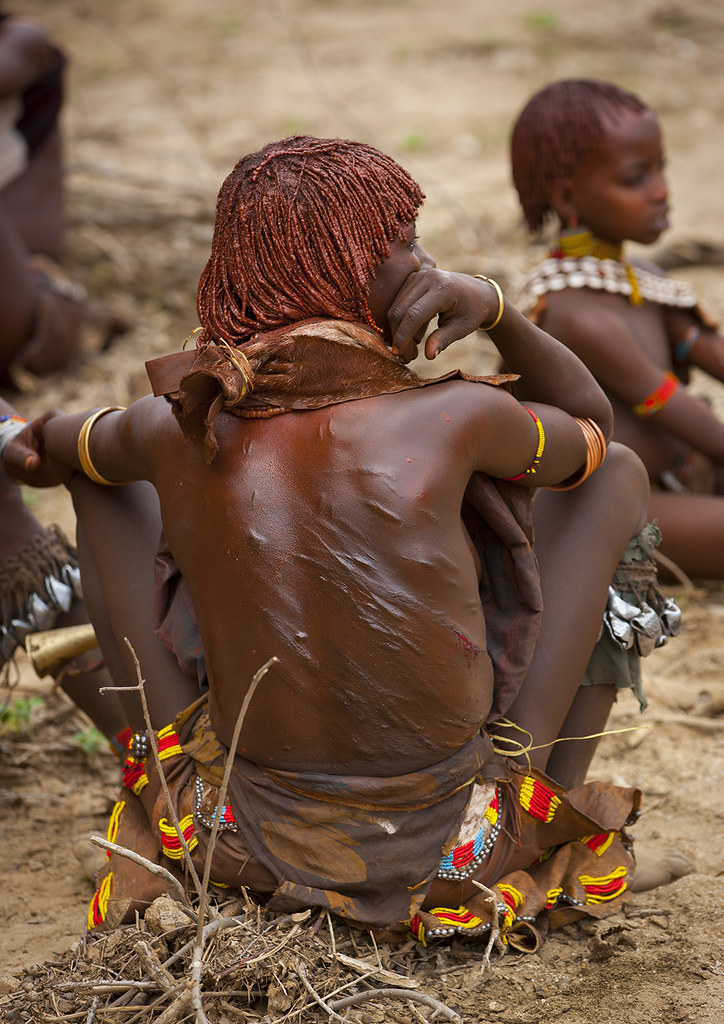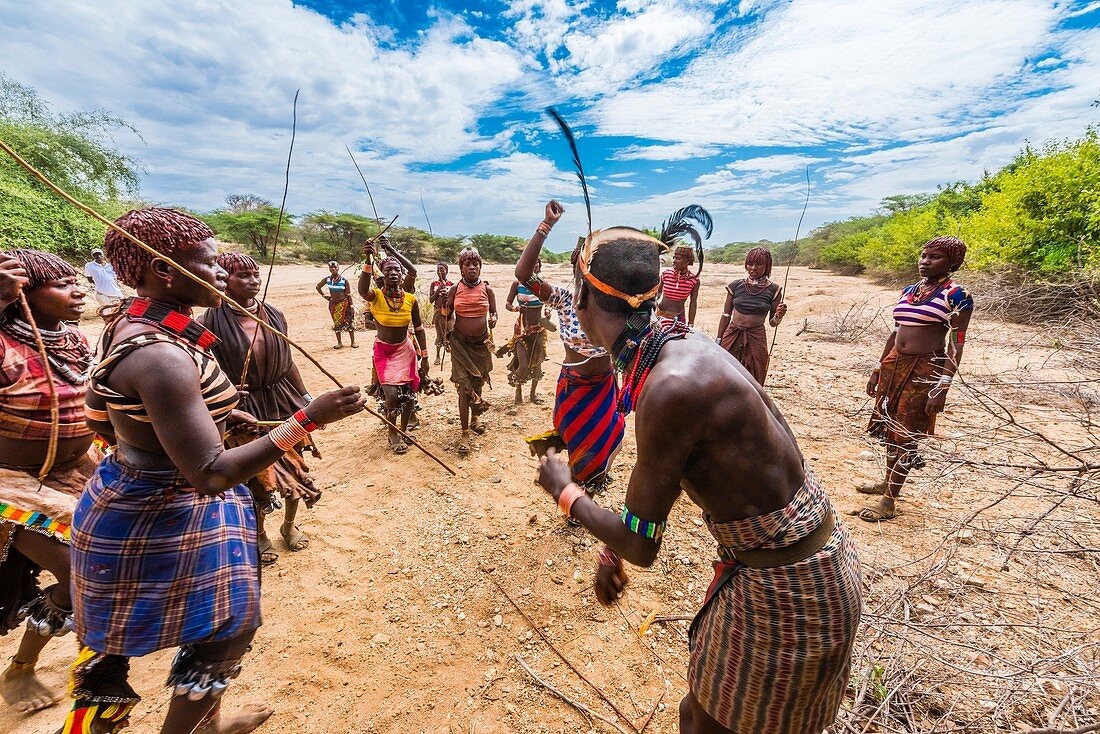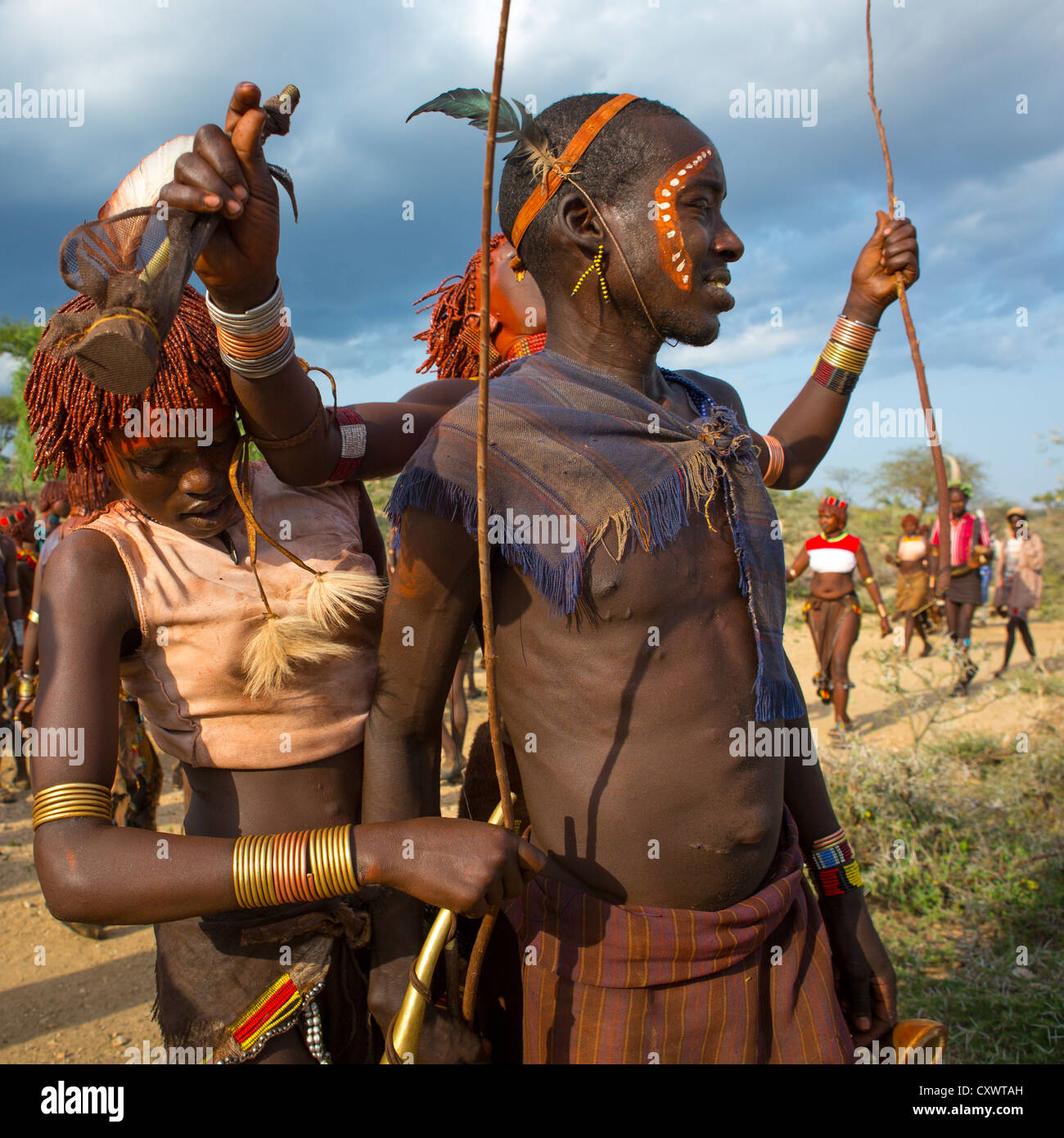Ethiopia Hamar Bull Jumping Ceremony Whipping Women
$ 6.99 · 4.7 (491) · In stock

Photographer Nicola Bailey documents a difficult-to-watch tradition for one of Ethiopia's largest tribes.
For the Hamar, cattle form the foundation of their livelihoods and are also vital for cultural transactions, including providing a dowry to marry, according to Bailey.
With cattle being so important, it’s no surprise that the Hamar place great significance on bull-jumping ceremonies, she said. These ceremonies take place in order for a man to come of age.
Caption: The women blow horns and sing taunts to the Maza to try and incite them in their whipping.
The ritual whipping is a major part of the ceremony. Before the bull jump occurs, the young man's female relatives dance and taunt the males in attendance, asking to be lashed with the miceres, or whips made out of various kinds of wood. The woman sing and chant, “I want to be whipped by this Maza until his miceres have been finished off! I will finish all his miceres!”
Caption: Two female relatives of the boy who is going to jump the bulls stand watching the ceremony. Evidence of ceremonial lashings are visible on one girls back.
More than a dozen cows are lined up for the young man to clear. The man must cross the backs of the cows six times and with each crossing, the crowd roars and it is only when he has done this successfully is he considered a man and will be able to marry, according to Bailey.
Caption: The boy, in his bull jumping ceremony to become a man, makes his first leap across the back of the bulls, surrounded on all side by the Maza—other men who have successfully jumped before him.
The ceremony is a pivotal point in the life of the tribe's young men. “Until he's jumped over the bulls, he’s not a man, and until he’s a man, he can’t get married, Bailey said.
Caption: The boy who jumped inspects the cattle.
For the women, the tradition is seen as a way to express loyalty and support. Some will be lashed with a five-foot stick until it breaks.
“The more they can withstand the whipping, the more they demonstrate the love for the man, Bailey said.
Caption: A woman from one of the Hamar tribes.
Scars are considered a rite of passage — and mark of achievement and beauty — for the Hamar people, Bailey says. For example, men display scars signifying combatants they killed in battle with pride. The scars from the ceremony whipping become almost like an insurance policy for the women. That man is indebted to them, if they ever need anything in the future, Bailey said.
Mothers, cousins, sisters and aunts will therefore encourage the men to whip them until their backs are shredded and bleeding, she said.
Caption: A female relative of the bull jumper stands and watches the ceremony after being whipped.
The young man's head is partially shaved, he is rubbed with sand to wash away his sins and rubbed in dung to give him strength, according to Bailey. Strips of tree bark are then wrapped around his body for spiritual protection and one of the other Maza’s ritually gives birth to him while sitting on a cowhide surrounded by other members of the community.
Caption: The Maza grab at the bulls to bring them into formation, ready for the bull jump.
Family and other tribe members travel long journeys to attend the events. You saw these women who had walked for miles and miles and head to these ceremonies, Bailey said. Several days of rituals leading up to the main event — the actual jump.
Caption: The Maza hold the bulls tight, ready for the bull jumping to take place.
The whips (miceres) are made of various types of wood and the Hamar say that at the top of the micro there is ‘butter and honey,’ meaning that the use of it will lead to abundance and well-being, Bailey said.
Caption: Women from the village dance with bells on their ankles, kicking up dust and taunting the Maza into whipping their female relatives.
While the Hamar is, in general, a very patriarchal society, women often find themselves leading a household once their husbands die. She has responsibility over cattle and livestock, Bailey said. [She has] power.
Caption: A Hamar girl pauses during the ceremony leading up to the bull jump.
When asked what advice she gives to millennial women who want to create positive change in the world, Bailey said she encourages young people to use all the tools they can to find and connect with topics and issues they care about. There are so many issues out there, she said. There's always something you can get impassioned about.
Caption: The sun sets over one of the Hamar villages.

ETHIOPIA'S LAST FRONTIER: THE BLOODY WORLD OF THE HAMAR TRIBE

Woman whipped at Hamar tribe bull jumping ceremony Ethiopia Stock

i.ytimg.com/vi/wMOYZDPWsKc/hqdefault.jpg

Ethiopia Hamar Bull Jumping Ceremony Whipping Women

/wp-content/uploads/2018/04/Hamar.-Phot

Hamar Tribe Woman After Getting Her Back Whipped At A Bull…
.jpg)
Pascal Mannaerts - Photographer

Bull-jumping Ceremony - Whipping (1), Turmi, Pictures

The Hamar Tribe's Rite of Passage to Manhood is No Bull

cheap selling shop Ethiopian Hamar the woman Ethiopia - Hand Omo

At the Hamer tribe bull jumping … – License image – 71335498

Hamar Tribe Women At A Bull Jumping Ceremony, Dimeka, Omo Valley

Omo Valley Explorer Part 4: Bull Jumping Ceremony – Raïsa Mirza

Ethiopia Hamar Bull Jumping Ceremony Whipping Women

Women Arguing to be whipped by the Maze During Bull Jumping